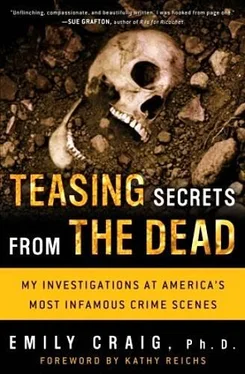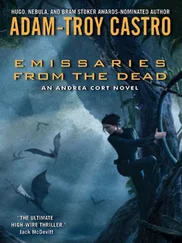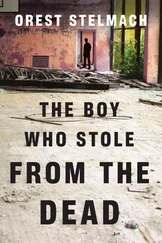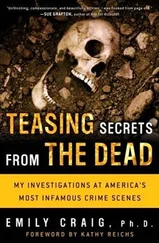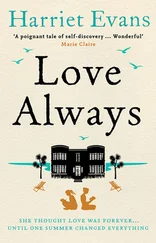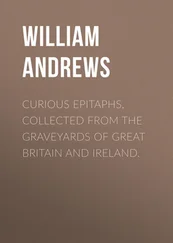As the surgery proceeded, I was especially struck by the smell of warm blood that pervaded the room. The smells of surgery are something the medical shows haven't conveyed at all. While burning human flesh smells nothing like its animal counterpart, human and animal blood smell eerily the same-and as someone who had done her share of hunting and butchering wild game, I hadn't expected the smell of blood to bother me. But it did, maybe because of the visuals that went with it. Every so often, the surgeon would hit an artery and blood would spew up like a tiny geyser. Even the smallest artery could cause an arc of blood to splat across his blue-green robe.
Although I loved watching these surgeries, I realized early on that I'd never make it as a pathologist. Frankly, I don't like to see or smell blood. I can't stand to see someone insert a needle into an eyeball to withdraw fluid, and the sounds and smells associated with aspirating stomach contents make me want to vomit up mine. Even today, I avoid the “squishy stuff” whenever possible and I'm profoundly grateful that I was able to go into first orthopedics and then forensic anthropology, where I could work with muscle and bone rather than internal organs.
Nevertheless, my class in pathology, where we, shoulder to shoulder with the medical students, would watch pathologists perform autopsies, gave me a valuable insight into my own capacities. My budding ability to visualize a body in three dimensions began to pay off: Before the pathologist made the first cut through the skin, I knew precisely what he or she would find underneath. Since I now knew what normal organs and tissue should look like, abnormalities caused by disease or injury seemed glaringly obvious.
It's one thing to stand at a surgeon's elbow and watch the most intricate procedures. It's a whole other thing to perform surgery yourself. The Medical College of Georgia believed that in order to illustrate surgery properly, medical illustrators had to pick up the knife and know how to use it. Of course, we illustrators were never going to operate on our own patients. But if we had never performed operations ourselves, how would we discover how much tension is needed to suture intestines, and how that differs from suturing skin? How would we learn exactly how to hold each instrument, or the correct direction and technique for applying force when retracting a rib cage? And if we didn't thoroughly understand these procedures, how could we translate such information to our drawings? These were things we could only learn by doing.
So in its wisdom, the Medical College had decided that we illustrators would enroll alongside the budding surgeons in their classes in dog surgery. Each of us students-future doctors and illustrators alike-were assigned a large dog who'd been abandoned or donated to our program, on whom we could learn the basics of surgical technique.
From the first, I had mixed feelings about this aspect of our training. On one hand, I love dogs-always do, always have. So I wasn't without sympathy for the critics of the Georgia program, who considered it cruel, disgusting, even unethical for us illustration students to cut up helpless animals in order to learn surgical techniques that we were never going to perform.
On the other hand, the dog surgery program turned out to be one of the most valuable experiences in my education. Here was where I really began to understand what surgeons experienced-because, albeit it on a very small scale, I was doing their work. Each dog in the program received a thorough medical “workup,” then underwent a series of operations over a period of several weeks. We removed their gall bladders and spleens, and resectioned their bowels. Working around the clock, we did everything we could to ease their post-op pain. All of us, illustrators and med students alike, were deeply committed to our dogs' care.
The most surprising thing to me about actually performing surgery for the first time was that the tissue I was operating on was warm. The only tissue I'd ever handled before had been in the dissection lab, and it was almost icy. Now suddenly my hands were warmed with the vital heat of a living creature, a warmth that crept up through my fingers and wrists and into my arms. It wasn't unpleasant, exactly, but it was a shock.
Being a dog lover, I had bonded with my dog patient as I performed the series of operations on him. He was a large German shepherd with melting brown eyes, and I never failed to spend a few minutes on each “medical” visit scratching him behind the ears and telling him how beautiful he was. Although I purposely never gave him a name, I did manage to block out the fact that our final exam required us to euthanize our dogs and perform autopsies on them.
For the medical students, this was a crucial rite of passage: Could they maintain the detachment they would need to cut open human bodies, to depersonalize their patients enough to be able to work on them? We illustrators felt that we were entitled to a bit more artistic sensitivity-but, truthfully, the process was hard on all of us. We tried to rationalize it, saying that if these dogs hadn't been part of our program, they would have been killed anyway.
That argument was fine in theory, but when I actually had to approach my dog's cage, look into his eyes, and contemplate ending his life, I knew I simply couldn't do it. I went to my professor and begged for a dispensation. He looked into my face for what seemed like several minutes and I couldn't help wondering what he was thinking. “Fine,” he said at last. “You don't have to be there when the animal dies.”
I still had to perform the autopsy, but at least I didn't have to perform that awful act. Looking back, I realize this was an important turning point for me. I had no problem with dead bodies, but I couldn't handle the process of dying. Wherever I worked as a medical illustrator, it wouldn't be in a hospital.
Now I understand that the dog surgery class was important for another reason: It was crucial preparation for the forensic cases I'd later encounter in which the stories of the victims were absolutely heartrending-children led into certain death by their trusted parents, as happened with the Branch Davidians in Waco, Texas; a battered wife and murdered infants shot in cold blood by a Kentucky father; the young woman butchered and thrown into the chilly Wisconsin River. What I started to learn in dog surgery-and have had to relearn many times since-is the crucial balance between becoming hardened enough to remain objective with the science while retaining enough emotion to feel outrage on the victims' behalf. Cold, clear objectivity enables me to analyze the evidence, and that's a crucial part of my job, one that offers closure to loved ones and sometimes helps bring a murderer to justice. But compassion for the victim spurs me on to uncover new evidence, keeping me up late to work on a forensic sculpture or sending me on another trip into the Kentucky woods. It's so frustrating when my colleagues and I can't identify a victim or find the crucial evidence in his or her case-but it's so rewarding when we can.

My experience with dog surgery had taught me that I couldn't work in a hospital-but then where could I practice my profession? Through a series of fortunate coincidences, my ongoing interest in muscles and bones led me to Jack Hughston, M.D., who was then doing groundbreaking work in orthopedics and sports medicine at the Hughston Orthopaedic Clinic in Columbus, Georgia. To my eternal gratitude, Dr. Hughston not only hired me, but also gave me numerous opportunities to expand my knowledge of anatomy, orthopedics, and illustration, and over the next fifteen years I made thousands of drawings based on anatomical dissections and surgeries conducted at the clinic. I was even able to conduct dissections of my own, working with hundreds of knees, ankles, hips, shoulders, and elbows-extremities from men and women of all races and ages. Here, in the clinic's sterile, cold, and often lonely lab, I began to think of myself as teasing secrets from the dead, forever grateful that their final gift would help others regain the function of an injured or diseased limb.
Читать дальше
